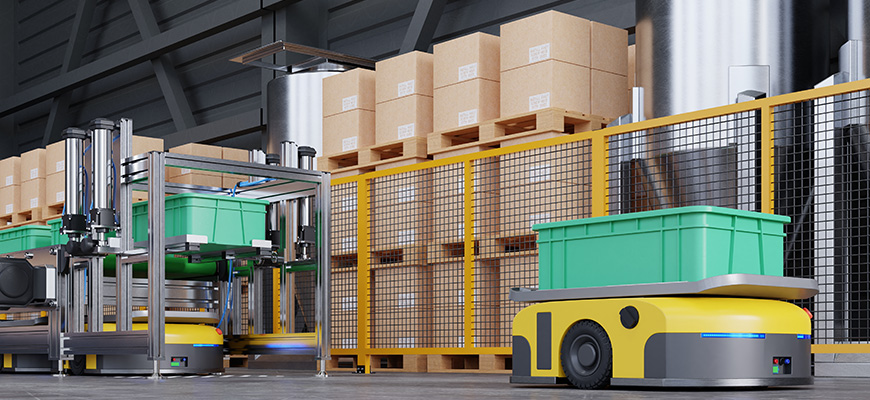
Creating your own Rocket Industrial personal account has many benefits:

Due to the rapid advancement of technology in the last few years, the landscape of material handling operations has undergone a deep transformation. Automation and robotics have become common in warehouses of all sizes to be more efficient and combat labor shortages. Two significant contributors to this change are Automated Guided Vehicles (AGVs) and Autonomous Mobile Robots (AMRs). These robotic warehouse warriors are changing the way distribution centers operate, while enhancing efficiency, improving safety, and increasing overall productivity.
So what's the difference between Automated Guided Vehicles (AGVs) and Autonomous Mobile Robots (AMRs)? Both systems share a common goal of automating material movement within industrial, warehouse, and storage settings. However, they have distinct differences in terms of design, navigation, and adaptability. While AGVs are best suited for defined repetitive tasks, AMRs offer flexibility and adaptability in more dynamic environments.
Introduction to Automated Guided Vehicles Systems (AGVs)
AGV systems are a precursor to AMRs and have been in use for several years. These vehicles operate by following a predetermined path set by operators. The paths are designated within the facility by magnets, wires, or floor markers and the AGV uses its lasers, cameras, or sensors to follow. They are best suited for environments with well-defined pathways and repetitive tasks, such as moving products from one end of a production line to another or transporting goods within a warehouse.
Due to their fixed route nature, AGVs require a structured environment and considerable setup to establish pathways. They are ideal for manufacturing and distribution facilities where tasks are standardized and don't require frequent reconfiguration.
AGV Tasks & Applications
Material transport - AGVs excel at moving heavy loads over fixed pathways, reducing the need for manual labor and minimizing the risk of human error or injury.
Assembly line parts - AGVs are commonly used in manufacturing settings to shuttle components between workstations, enhancing production line efficiency.
Warehousing - AGVs are often used in repetitive tasks such as replenishing inventory, returning empty pallets, tugger applications, and product retrieval.
Introduction to Autonomous Mobile Robots (AMRs)
Autonomous Mobile Robots (AMRs), on the other hand, represent a more advanced version of automated material handling technology. Unlike AGVs, AMRs rely on sensors, cameras, lidar, and advanced algorithms to understand their surroundings and navigate autonomously. This enables them to operate in dynamic environments, adapting to changing layouts and avoiding obstacles without needing fixed pathways.
AMRs offer a high level of flexibility, making them suitable for tasks such as material transport, inventory management, and even collaborative operations. They can be easily reconfigured to accommodate facility layout changes or new tasks, reducing the downtime typically associated with AGV system adjustments.
AMR Tasks & Applications
Dynamic warehousing - AMRs can navigate unstructured environments, efficiently transporting goods even in layouts that change frequently.
Order fulfillment - AMRs can be valuable assets in fast-paced fulfillment centers, picking items from shelves and transporting them to packing stations without any worker interaction.
Collaboration with humans - AMRs are able to operate alongside human workers without any external safety measures. This makes them well-suited for collaborative tasks, such as material delivery to production lines or workstations, safety and security checks, and bringing goods to an order picker.
Both Automated Guided Vehicles (AGVs) and Autonomous Mobile Robots (AMRs) are beginning to play critical roles in modern material handling operations. Their applications extend across a range of tasks, offering significant benefits in terms of efficiency and cost savings. If you’re interested in automating your material handling processes further, contact us for a discovery call with a specialist.